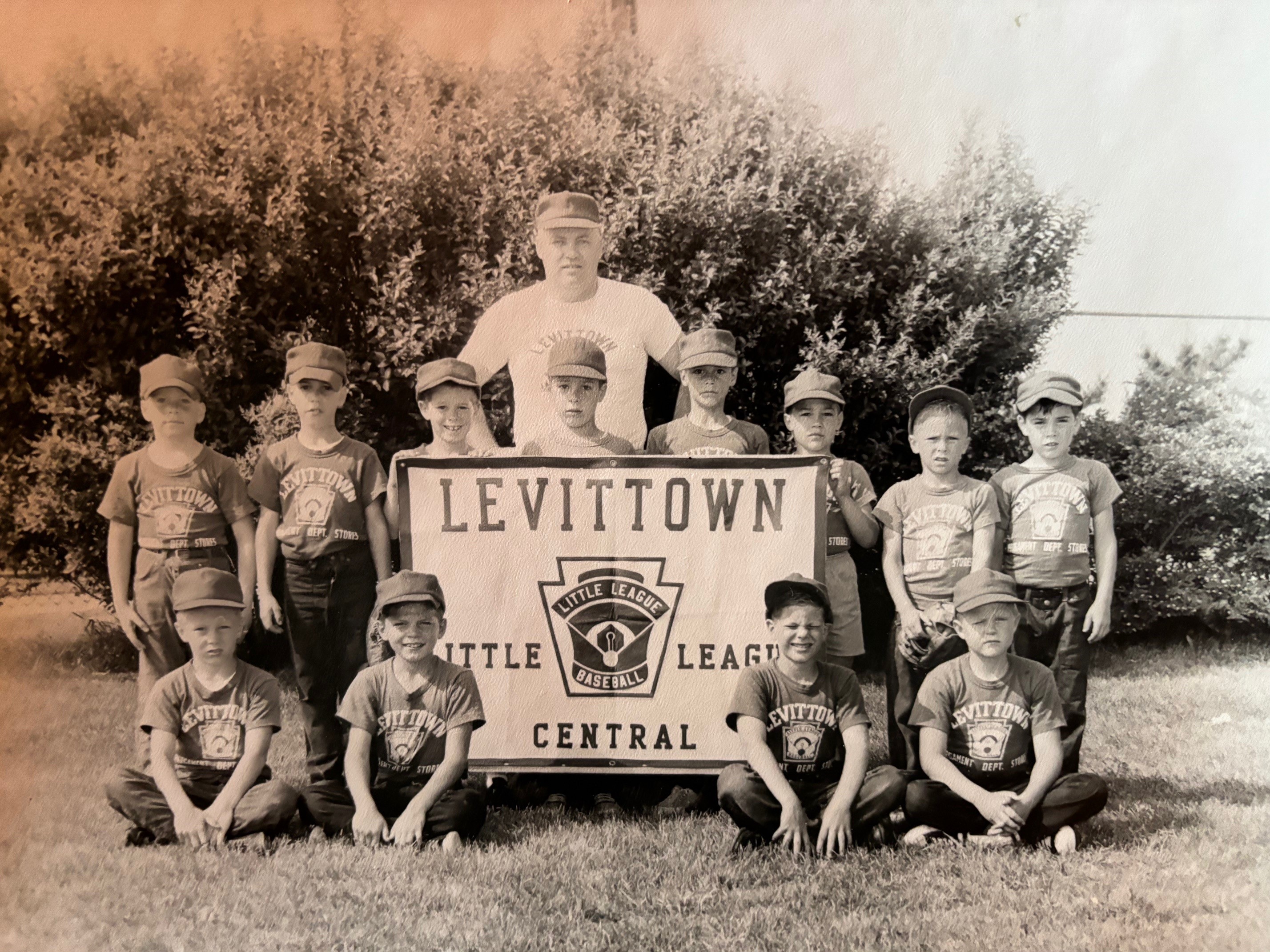Thomas Wolfe’s admonition notwithstanding, I actually went home again, to Levittown, in March of 2025, for the first time in 35 years. The occasion was my induction into the Levittown School District Hall of Fame, a laurel I self-deprecated to friends as saying more about Levittown than it did about me, but which in truth I was, and remain, deeply honored to receive. And as much as I looked forward to the promised dinner ceremony, to be held at my old (but long since mothballed) high school, I was just as eager to visit some old haunts and see what had become of my hometown.
But first, a word about Levittown. Founded in 1947 on the south shore of Long Island’s Nassau County to provide affordable housing options for GIs returning from WWII, it is today best known as “America’s first planned suburb,” or as I like to think of it, as ground zero in the American baby boom. My parents, both GIs returning from the European theater, were among those inaugural homeowners, and it was in Levittown that they raised me and my five siblings.
Ours was one of over 17,000 Levitt homes built between 1947 and 1951 – cookie-cutter affairs on quarter-acre lots laid out in a labyrinth of undulating streets and anchored by four high schools and seven “village greens,” each of which featured a large outdoor swimming pool. For my first-generation cohort of Levittown kids, it was a magical time and place to grow up and run free, and, for but one example of why, the Levittown of my childhood boasted what was then the world’s largest Little League.
Today, Levittown is also synonymous with drab homogeneity (all those little houses, all in a row), but I take strenuous issue with that stereotype. As Exhibit A, I offer a photo (below), taken around 1963, of my nine-year-old farm baseball team. All twelve kids in that photo (that’s me, standing over the letter W) are the sons of WWII veterans. All grew up in identical Levitt houses, playing on the same suburban streets surrounded by the same friends and neighbors. All went to the same schools and churches and were taught the same curriculum by the same teachers, priests, and rabbis. And yet . . .
One of those boys would become an Air Force fighter pilot. One would die of a heroin overdose. One would become the dean of a Swiss university. And one remains an FBI most-wanted fugitive.
The lesson being, I suppose, that environmental factors can account for only so much in shaping our life outcomes. When asked about my own education in the Levittown public school system, I always say, “There was a world-class education to be had, if you wanted it.” And yes, I both wanted and received it. But I also yearned to see the world beyond those flat Long Island horizons, which is why I did my undergraduate studies in Los Angeles, “as far away as I could get without a passport.” And but for attending one fifteen-year high school reunion, I hardly ever looked back.
But here I was, being feted by that same public school system fifty years after graduating from Levittown Memorial High School, and I’d be joining a pantheon of local luminaries that includes best-selling novelist Philip Margolin, lacrosse coaching legend Bill Tierney, prolific songwriter Ellie Greenwich (Be My Baby, Chapel of Love, Leader of the Pack), and musician Moe Tucker, the drummer (along with Levittown guitarist Sterling Morrison) for the Velvet Underground. But first I wanted a good look at the old neighborhood.
When Levittown was first constructed, each home came with a maple tree out front and two fruit trees out back. Those trees grew in tandem with our families, and by 1974, my final year in residence, created a leafy streetscape of modest but well-proportioned homes fronted by tended grass lawns. Today, I’m sorry to say, the maple trees are long dead, and the homes have grown like Topsy, including some monstrous McMansions ill suited, to my eye, to their surroundings. Not surprisingly, the homes our parents bought for $7,000 now list for upwards of a million.
Some would call that progress, but I’m not sure I’m one of them. I was, however, able to visit my local public swimming pool (Acorn Lane), my family’s Catholic church (St. Bernard’s), and what remains the best pizzeria on planet Earth (Dominico’s), all, thankfully, unchanged in half a century.
So maybe you can go home again, at least to walk through the shadows of your childhood memories. Because you can take the boy out of Levittown, but you can never fully take Levittown out of the boy.

